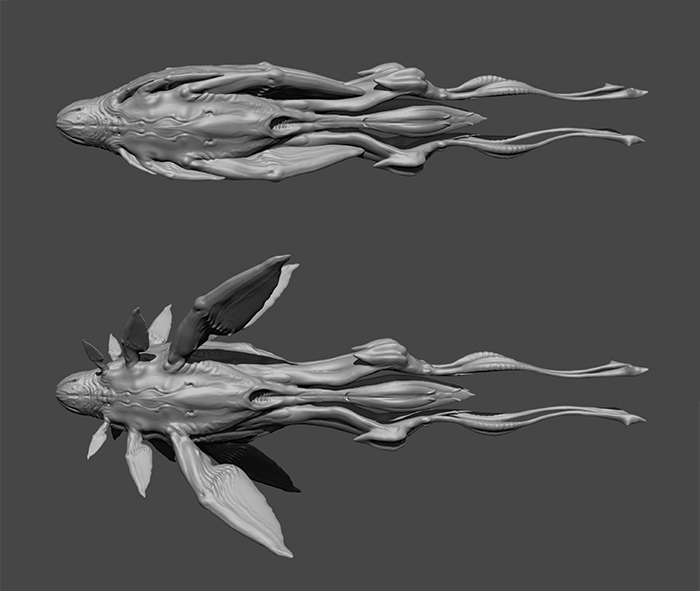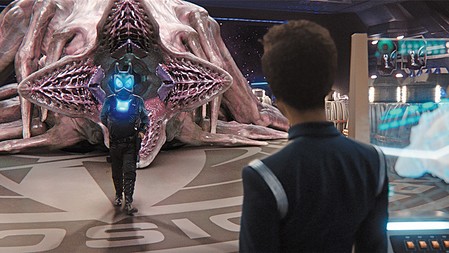‘Star Trek: Discovery’ Team Talks Building a Better Space Whale
By Daniel Holloway
LOS ANGELES (Variety.com) – When Rainn Wilson’s Harry Mudd makes his entrance into CBS All Access’ “Star Trek: Discovery,” he does so in dramatic fashion, stepping onto a cargo bay deck through the mouth of a gormagander. The fictional creature is referred to in the episode and by the show’s creative team as a “space whale” and looks the way it sounds: Picture a whale redesigned to swim through space instead of water. “Discovery” writers dreamed up the creature as a way for Mudd to sneak on board in an episode where he attempts to take over the show’s starship. The gormagander is the central element of what quickly becomes an action scene when Mudd begins firing at crew members. Initially attempted as a practical effect, it was ultimately executed by the show’s digital-effects team.
Aaron Harberts
Executive producer
As showrunner alongside longtime writing partner Gretchen J. Berg, Harberts did not worry when working on the seventh episode — or any others — about the ability of the show’s artisans to execute. He credits exec producer Alex Kurtzman, a veteran of effects-driven television and film, as well as visual effects supervisor Jason Zimmerman and head creature artist Neville Page, for being able to pull it all off. “I never worry about Jay Z [Zimmerman] and his team,” Harberts says. “But obviously we have to worry about the money and the time.”
Jason Zimmerman
Visual effects supervisor
“With us it was just like, ‘How much time we have? OK, let’s get it done.’ Fortunately, we have people like Neville [Page] to lean back on for design. If Neville’s going to do it, I know that it’s going to be good. It’s just a question of us getting it and building it from that point forward.”
Alex Kurtzman
Executive producer
“It was an immediate, ‘Guys, don’t even spend the money on trying to integrate anything — we’re going to cut the episode for story, and then we’re going to hand every shot over to Jay Z,’” Kurtzman says. The “Discovery” production designers, responsible for physical effects, are among television’s most experienced — Kurtzman, Harberts and Zimmerman are each able to recall multiple moments when they pulled off the seemingly impossible. But nobody bats a thousand. “There’s always a learning curve of what you can and can’t accomplish. I would say that 99% of what production gives us is amazing.”
Neville Page
Creature concept designer
Once the space whale had made its way into the script, it was up to Page to design the creature. “It’s ridiculous and makes no sense if you take it literally, and I love a good challenge,” Page says. Hoping to ground the creature in science, he gave thought to its shape, biology, age, food consumption and how it hovers through space. At the same time, he wanted to stay true to the idea of a whale, so he added blowholes and fins, which would have alternative functions for an animal that floats through space. “Once I had all of those parameters set as my rules, I began simple pen sketches and evolved them into renderings that showcased the various ideas.” Page submitted his concepts for review. Once a direction was chosen, a 3D model was built.


